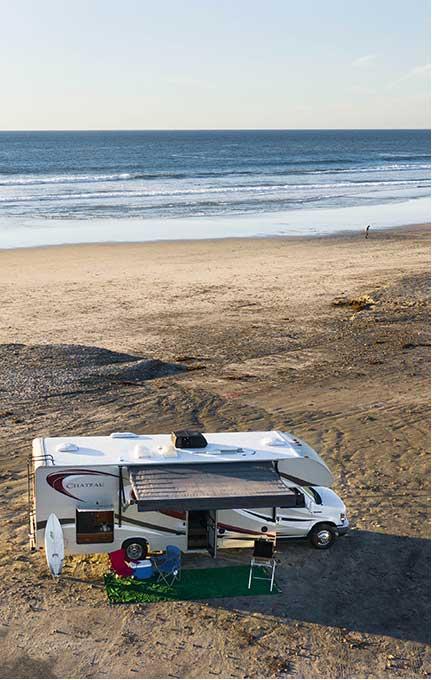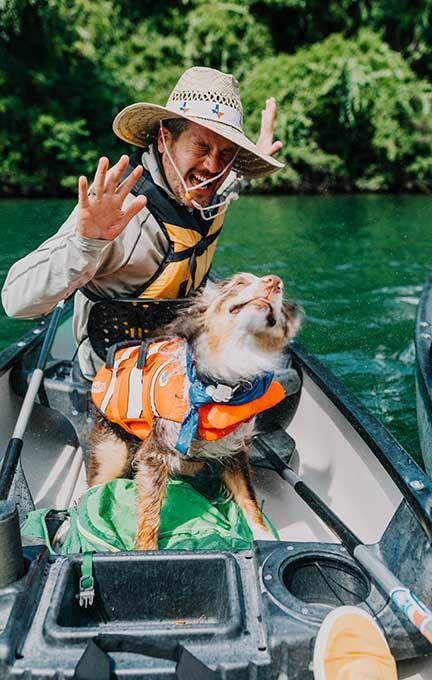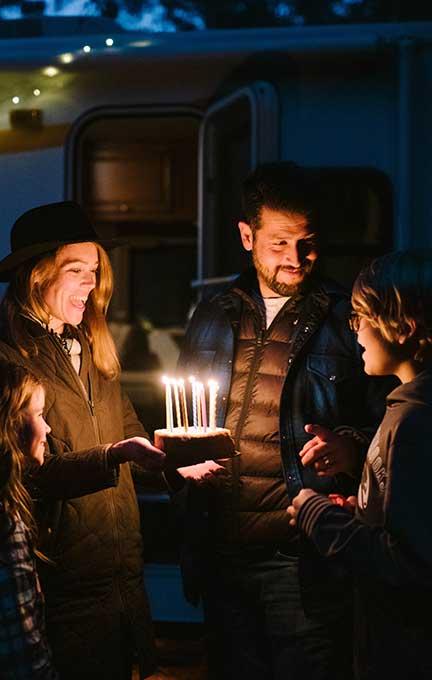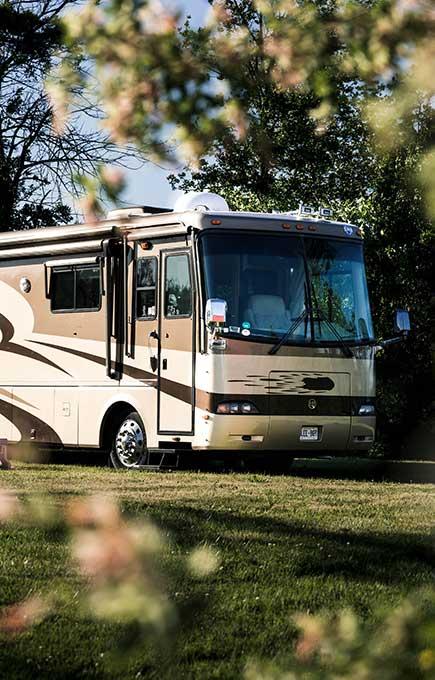Add these stunners to your bucket list ASAP! Winter is on its way, which means you can expect unparalleled views, pristine scenery, and uncrowded landscapes along these trails. You might need some technical expertise to reach the finish line, as some of the hikes below require winter-specific gear and training, but we’ve got you covered.
We break down the basics of these awe-inspiring hikes, detailing the views you can expect to find and the gear and amount of effort you’ll need to get there.
1. Crater Lake Trail
White River National Forest, Colorado
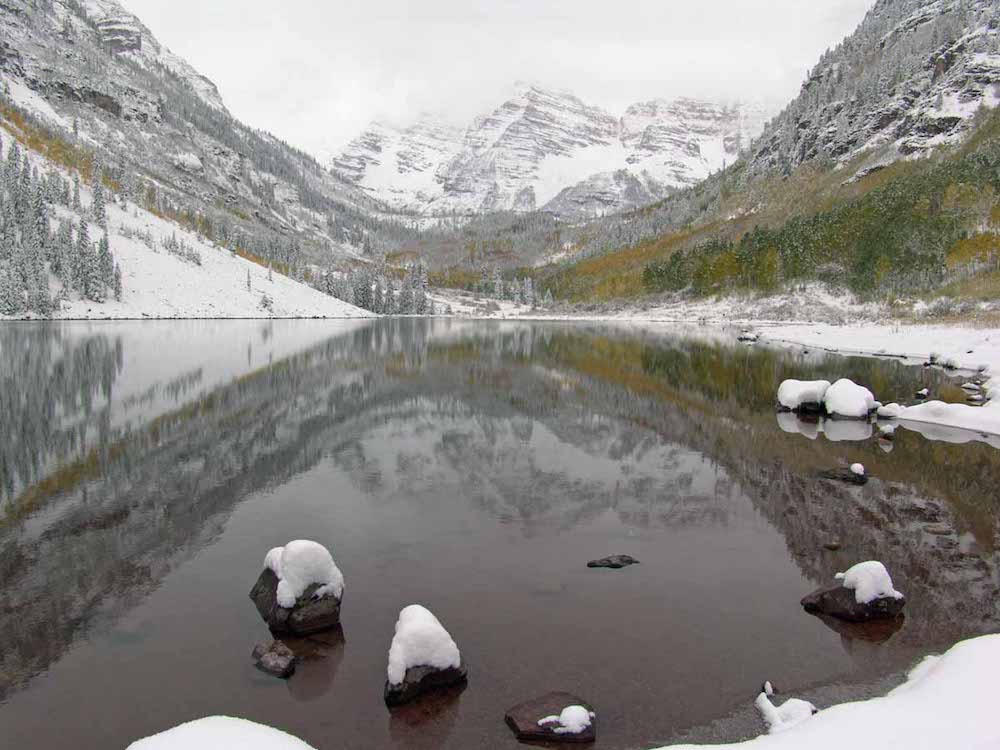
The view: Expect snow-covered, towering peaks in every direction, enveloping the lush valley below that’s dotted with lakes — first, Maroon Lake just past the trailhead, then Crater Lake just 1.8 miles in.
The gear: At the very least, you should have waterproof boots and plenty of layers. Traction devices, snowshoes, or backcountry skis with skins and poles might also be required depending on the amount of snow on the trail.
The hike: This 3.6-mile out-and-back starts climbing almost immediately, so be prepared for a moderate ascent (you gain around 500 feet total). From the trailhead/ranger station at Maroon Lake, trace the north side of the lake to the Scenic Loop split at 0.3 miles. The next 1.2 miles is forested by aspens. Bear left at the final junction at 1.8 miles to Crater Lake.
2. Rubicon Trail
South Lake Tahoe, California

The view: Score expansive vistas across dreamy Lake Tahoe as you trace its snow-dusted shore along this winding trail.
The gear: Depending on the amount of snow on the trail, snowshoes might be a good idea, but you can most likely get away with waterproof hiking boots if it’s packed down.
The hike: This 12.3-mile out-and-back begins at D.L. Bliss State Park and has many logical stopping points along the way if you’re not up for the full mileage. But if you’re aiming to tackle the whole thing, you’ll follow a well-maintained trail along the shore for the entirety of the hike and end at Emerald Bay State Park.
3. Half Dome
Yosemite National Park, California

The view: If you think there’s a more beautiful and breathtaking sight than Yosemite covered in snow, you clearly haven’t seen Yosemite covered in snow. Bask in the peacefulness of these giant, white-blanketed granite monoliths from 5,000 feet above the valley floor.
The gear: In summer months, the National Park System erects metal cables on Half Dome’s backside. In winter, however, most of this support system is removed, leaving hikers to fend for themselves for the remaining few hundred feet to the summit. To account for this, you’ll need an ice axe and crampons for safe measure, as well as the necessary mountaineering chops. The route can be extremely dangerous, even deadly, when icy or wet.
The hike: The 14 to 16-mile round-trip hike isn’t for the faint of heart — it requires a strenuous uphill slog almost the entire time. You gain around 4,800 feet in total. The most popular route is the well-marked Mist Trail past Vernal and Nevada Falls. At the Little Yosemite Valley junction, continue on via the John Muir Trail.
4. Dream Lake
Rocky Mountain National Park, Colorado

The view: If you’re aiming for the most lakes per mile on a hike, look no further than this trail. You’ll cruise by two lakes, Bear and Nymph, before hitting a perfectly framed body encased by jagged, majestic peaks only 1.1 miles in — Dream Lake.
The gear: Snowshoes are almost always a requirement in Colorado winters, so expect snow-covered trails. You’ll also be at altitude, so plan accordingly when it comes to extra layers.
The hike: From the Bear Lake Trailhead, take a left onto the Dream Lake trail (avoid the tourist-heavy Bear Lake Loop; you’ll get better views soon) and follow it for 1.1 miles, mostly uphill.
5. Angel’s Landing
Zion National Park, Utah

The view: Get 360-degree vistas of bright red canyon walls rising from the lush valley below. But don’t get too distracted — one misstep, and you could take a massive fall if you’re not holding onto the route’s safety chains.
The gear: If there’s been significant snowfall, expect the route to be hard-packed and icy. Traction devices or Yaktrax, as well as gloves to protect your hands from the freezing metal chains, are absolutely recommended.
The hike: This 5-mile out-and-back hike starts at the Grotto Trailhead, then follows a hiker’s bridge over the Virgin River and begins ascending steep switchbacks called Walter’s Wiggles. You can continue on the West Rim Trail the rest of the way to the viewpoint at Angel’s Landing.
6. Portage Glacier
Chugach National Forest, Alaska

The view: Take in a tidal-wave-like formation frozen (literally) in time. This bright blue glacier is surrounded by towering, jagged peaks, and we guarantee you’ve never seen anything like it.
The gear: Layer up for cold temps, and also bring along snowshoes if the trail hasn’t been packed down well and light traction devices if it has.
The hike: This 5.4-mile out-and-back begins with a steep ascent (around 750 feet in elevation gain) and levels out at the top of the pass. From here, you’ll descend past Divide Lake and continue onto Portage Lake, where you get a nice view of the glacier.
7. Fairlyland Loop Trail
Bryce Canyon National Park, Utah

The view: Snake through hoodoos (red, towering spires that rise from the depths of the canyon) as you travel from rim to ground floor.
The gear: If the ground is snow-covered, light traction devices are a good bet as you can expect some elevation changes along the trail.
The hike: This 8-mile counterclockwise loop begins at Fairyland Point and takes you from the rim down into the canyon via the Rim Trail to Sunrise Point, including a spur trail to Tower Bridge.
8. Delicate Arch Trail
Arches National Park, Utah
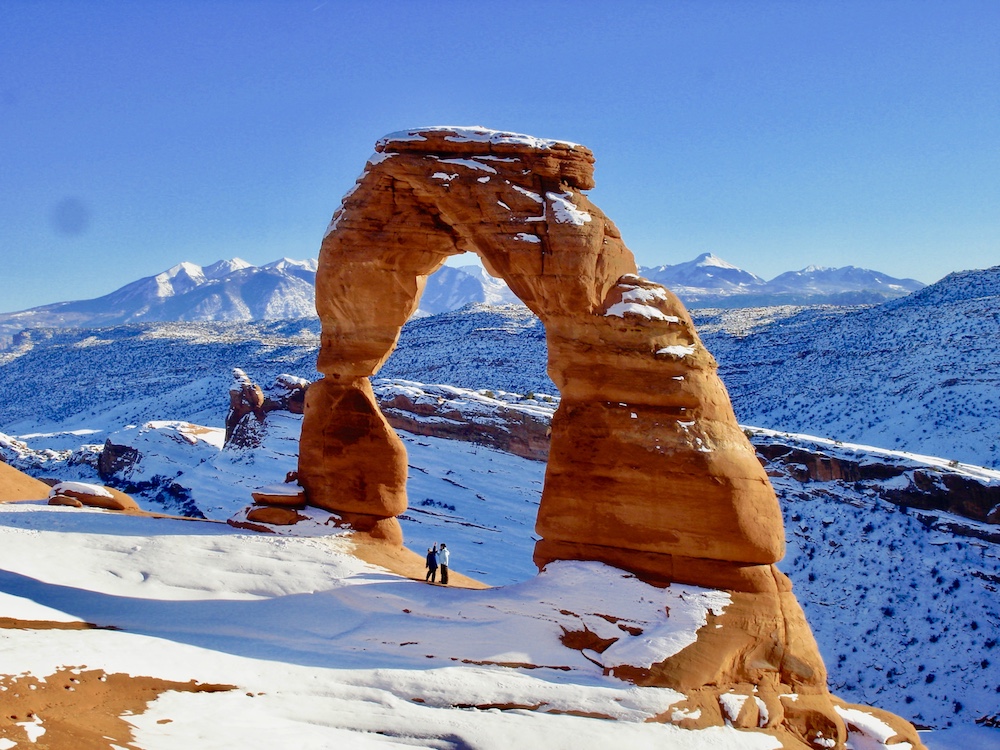
The view: Get a perfectly framed peek into the rest of Arches National Park through this gorgeous archway made even more stunning by the surrounding white landscape.
The gear: Waterproof hiking boots will probably do the trick, but if there’s ice on the ground, traction devices are always helpful.
The hike: This 3-mile round-trip hike starts at the Wolfe Ranch Trailhead and is considered moderate with a 480-foot elevation gain. However, you’ll get the bonuses of Wolfe Ranch cabin and a wall of Ute Indian petroglyphs on your way there.
9. Iceberg Lake Trail
Glacier National Park, Montana

The view: Experience a gorgeous aqua lake enveloped by imposing cirque walls. And watch out for grizzlies! They’re known to be around these parts.
The gear: During the winter, access is by ski or snowshoe only. Keep this in mind while you pack and plan appropriately.
The hike: This moderately challenging 9.7-mile out-and-back hike starts at the trailhead behind the Swiftcurrent Motor Inn. At 2.8 miles, Ptarmigan Falls is a great place for a rest stop and to enjoy panoramic views of the park. Continue onto Iceberg Lake and return the way you came.
10. South Kaibab Trail
Grand Canyon National Park, Arizona

The view: The Big Ditch, but covered in snow. Somehow it seems even more expansive when wrapped up in a blanket of white.
The gear: The trail is likely to get packed down and icy pretty quickly, so bring along traction devices to make your life easier on the steep descent and re-ascent.
The hike: Steep and strenuous, this is the most direct way into the canyon. However, the entire 14.6-mile South Kaibab trek will likely require an overnight stay, so we recommend stopping at aptly named Ooh-Aah point (1.8-mile out-and-back) unless you’re an experienced backpacker with the appropriate gear.
Ready to hit the road to tackle these trails? Find cool rigs, cute campervans and luxurious RVs that can get you there.




